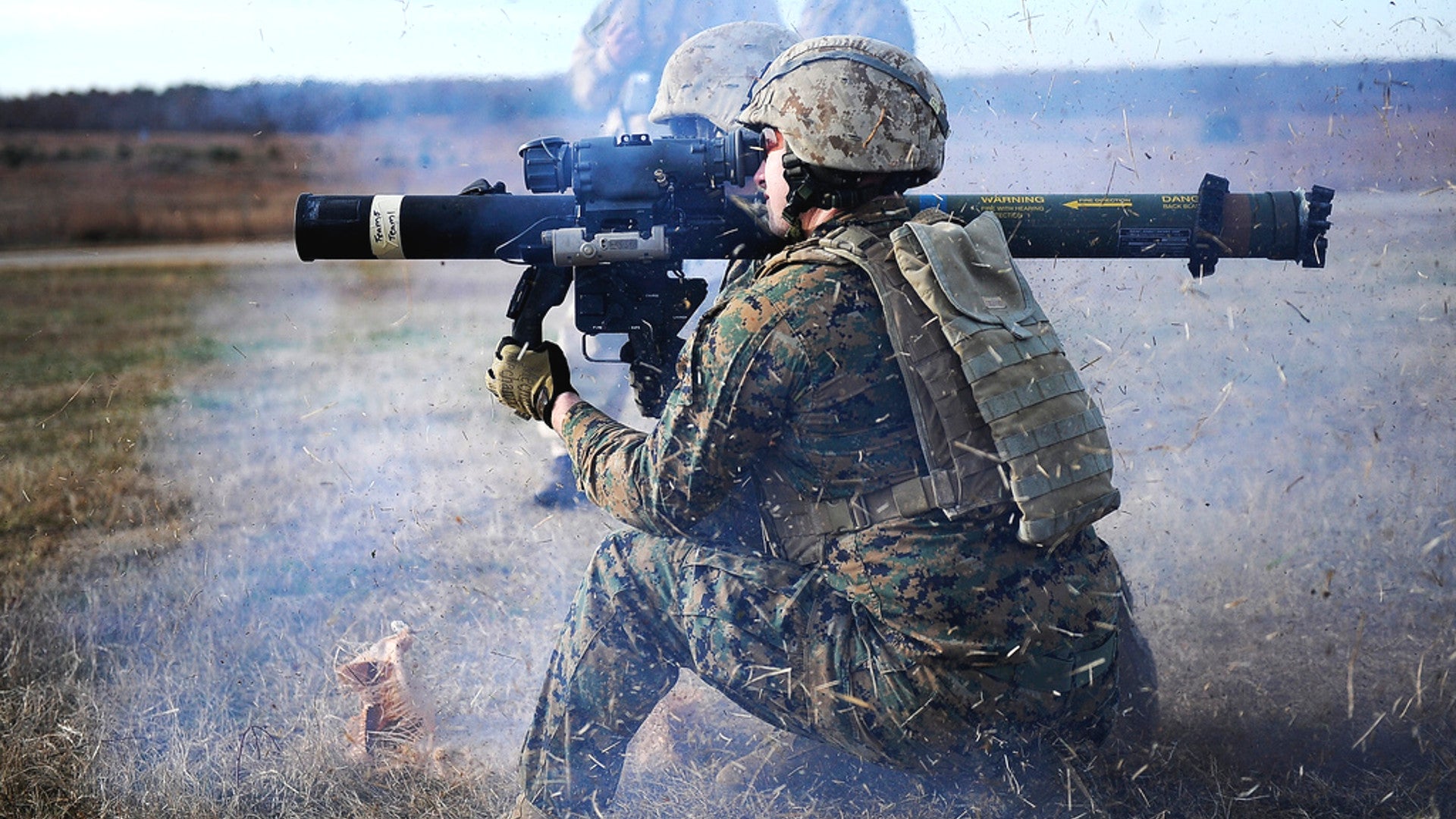After more than five years of development and testing, Marines have finally begun to receive the first improved 83mm Mk 153 Mod 2 rocket launchers, also known as the Shoulder-Launched Multipurpose Assault Weapon Mod 2, or SMAW Mod 2. The updated weapons are more accurate and easier to use and maintain, but their future is unclear, coming as the Marine Corps looks to begin issuing the similar Carl Gustaf recoilless rifle and eliminate certain infantry units equipped with the SMAW from the service entirely.
Marines with the II Marine Expeditionary Force (II MEF), which has its headquarters at Camp Lejeune in North Carolina, got their SMAW Mod 2s in November 2017, according to Marine Corps Times. The Weapons arrived at that I MEF, situated at Camp Pendleton, California, in January 2018. The Corps expects the weapon to reach full operational capability across the service between 2019 and 2020.
The SMAW gives Marines “a capability gap in breaching and provided a Marine-portable capability to defeat bunkers, breach urban structures and destroy lightly armored vehicles,” Barbara Hamby, a Marine Corps Systems Command spokesperson explained to Marine Corps Times. “SMAW Mod 2 improvements increase system accuracy, reliability and maintainability, and increase gunner survivability.”
Marines can reload the 83mm should-fired rocket launcher, which can use a variety of different ammunition types, making it a flexible system against various targets. These include traditional high-explosive anti-tank and anti-personnel types, as well as rockets with “Novel Explosive” thermobaric warheads that create massive blast overpressure and are especially effective against enemy forces in confined spaces, such as buildings or caves.
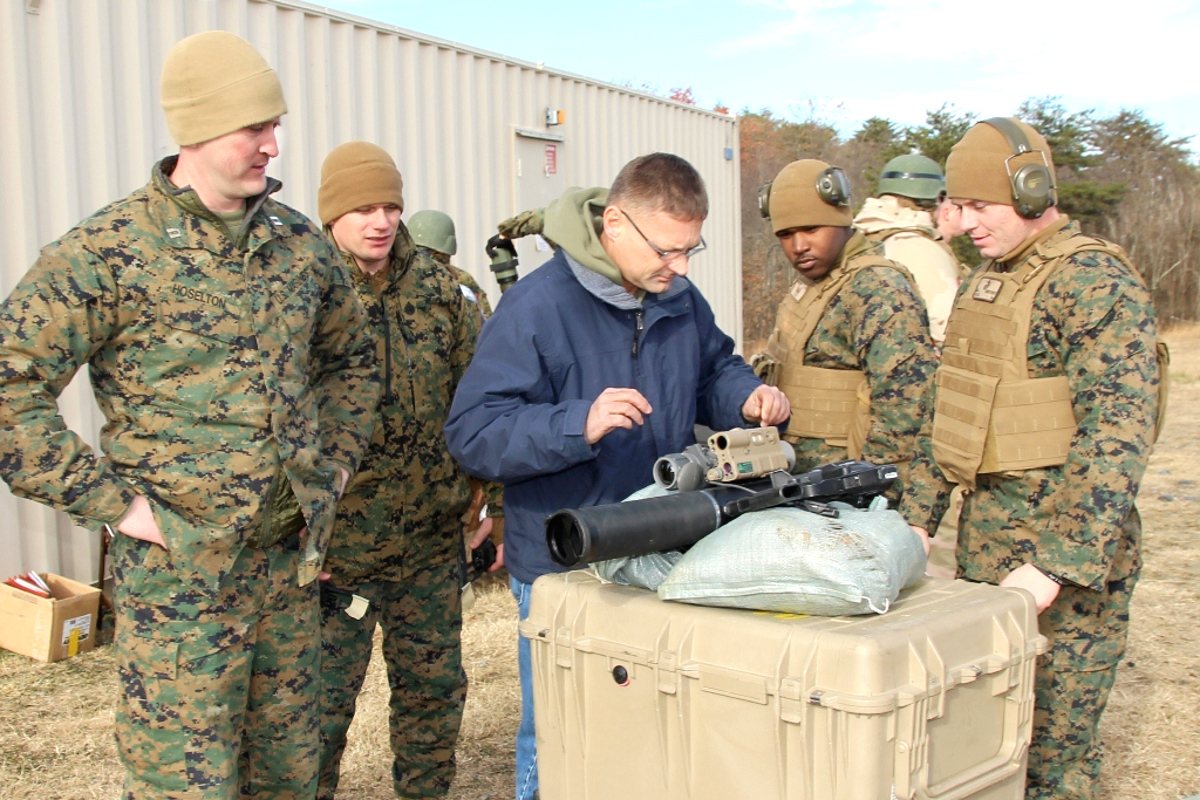
The most visible change between the earlier Mod 0 SMAWs and the updated version is the replacement of the original sight with a new Modular Ballistic Sight, or MBS. The unit works during the day and at night, thanks to a thermal imaging system, and includes a laser range finder that allows Marines to aim and fire faster and more precisely.
The laser ranging component also replaces the older and more complicated spotting rifle on the earlier weapons. This earlier arrangement consisted of what was essentially a separate gun strapped onto the side of the rocket launcher that fired a unique 9mm projectile that matched the ballistic trajectory of the main weapon.
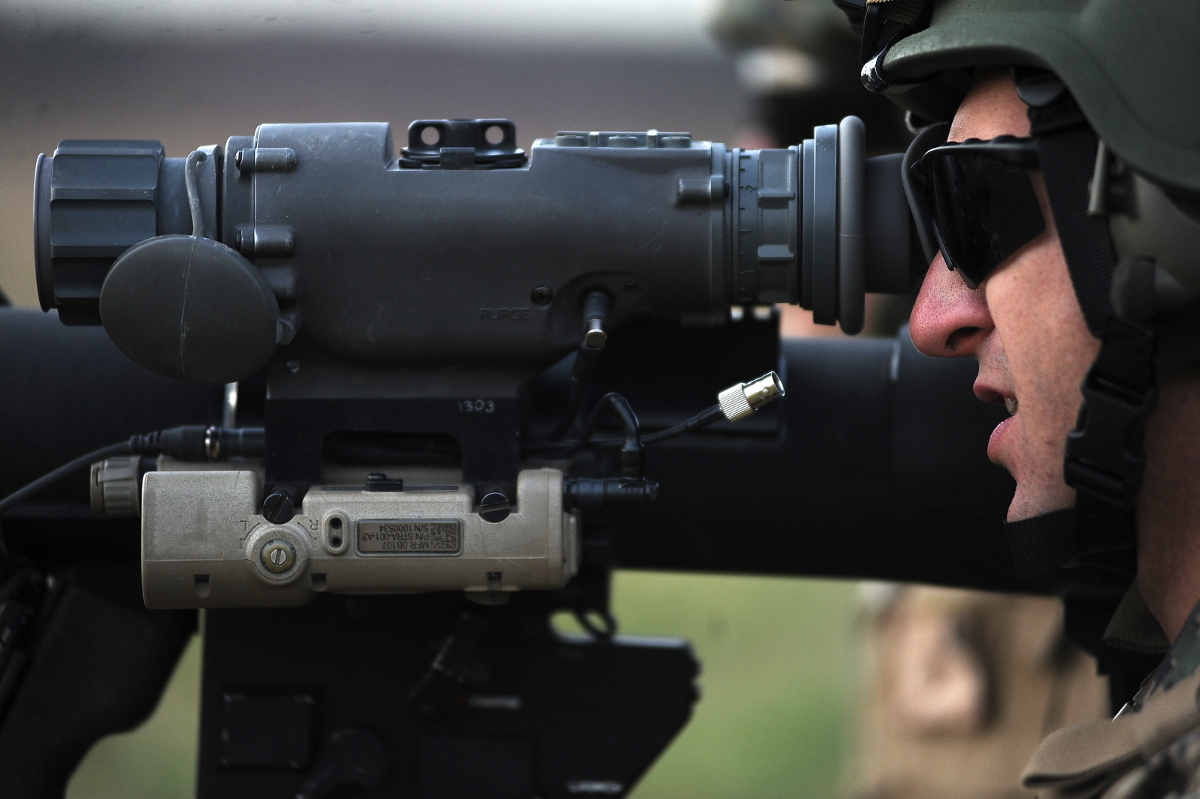
Gunners would aim at a target and first fire the spotting rifle in order to make sure they were on the mark and then fire the rocket. Needless to say this method was complex and time consuming and meant Marines spent considerable time exposed to the enemy.
The improved weapons feature various additional improvements and use advanced materials to lighten the overall weight. In the end, the 13 pound Mod 2 is approximately three pounds lighter than the original launcher.
But despite the obvious improvements over the original design, the weapon’s future in the Corps is uncertain. The service has already spent more than two decades working to update the system, which it first introduced in 1984. American defense contractor Talley Defense Systems, which Norway’s Nammo bought in 2007 and renamed Nammo-Talley, derived the original Mk 153 from the Israeli B-300, a 1970s-era design.
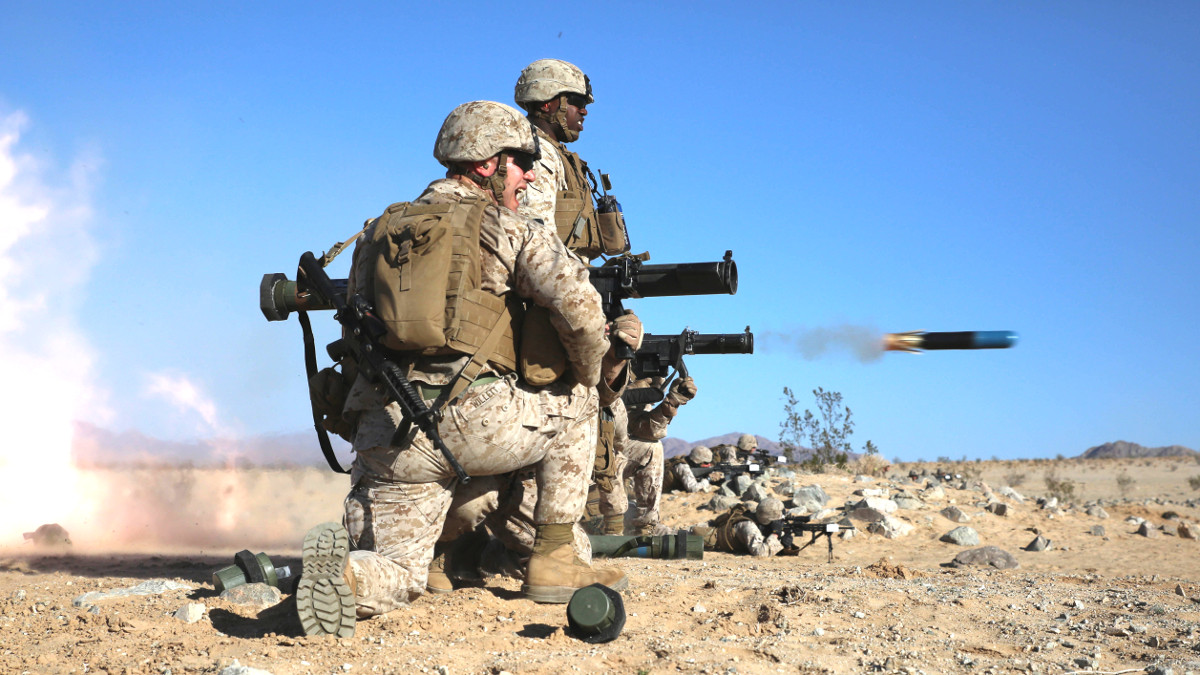
In 1988, the Marines initiated a product improvement program for the SMAW and in 1994, Navy engineers at the Naval Surface Warfare Center Dahlgren Division in Virginia crafted a prototype upgraded version. The major updates included a simplified spotting rifle and lightweight construction.
By the early 2000s, the service subsequently turned to what was then a partnership between Talley and Nammo, the latter of which was building the ammunition, to further develop this Mk 153 Mod 1. That project ran into significant delays, in no small part due to issues concerning licensing and patents related to the design, and by the late 2000s, the Marines and Dahlgren had shifted focus to the further improved Mod 2 variant.

It wasn’t until November 2015 that the Marines finally signed a $72 million production contract for the first 56 SMAW Mod 2s, but with Atlantic Diving Supply, a small Virginia Beach-based defense contractor, rather than Nammo-Talley. In August 2017, the company settled a lawsuit with the U.S. government and agreed to pay $16 million over allegations it misrepresented its size as a small business to win a number of deals with the U.S. military and had actually subcontracted a significant amount of the work on various projects. It is not clear whether or not the case touched on the Mk 153 Mod 2 contract specifically.
At the same time, however, the Corps has initiated a number of plans to modernize the fighting capabilities of its infantry units, especially when it comes to individual and crew-served weapons. Directly threatening the future of the SMAW, Marines in Japan conducted a trial of the 84mm Carl Gustaf recoilless rifle in November 2017, just as the first Mod 2s were arriving with II MEF.
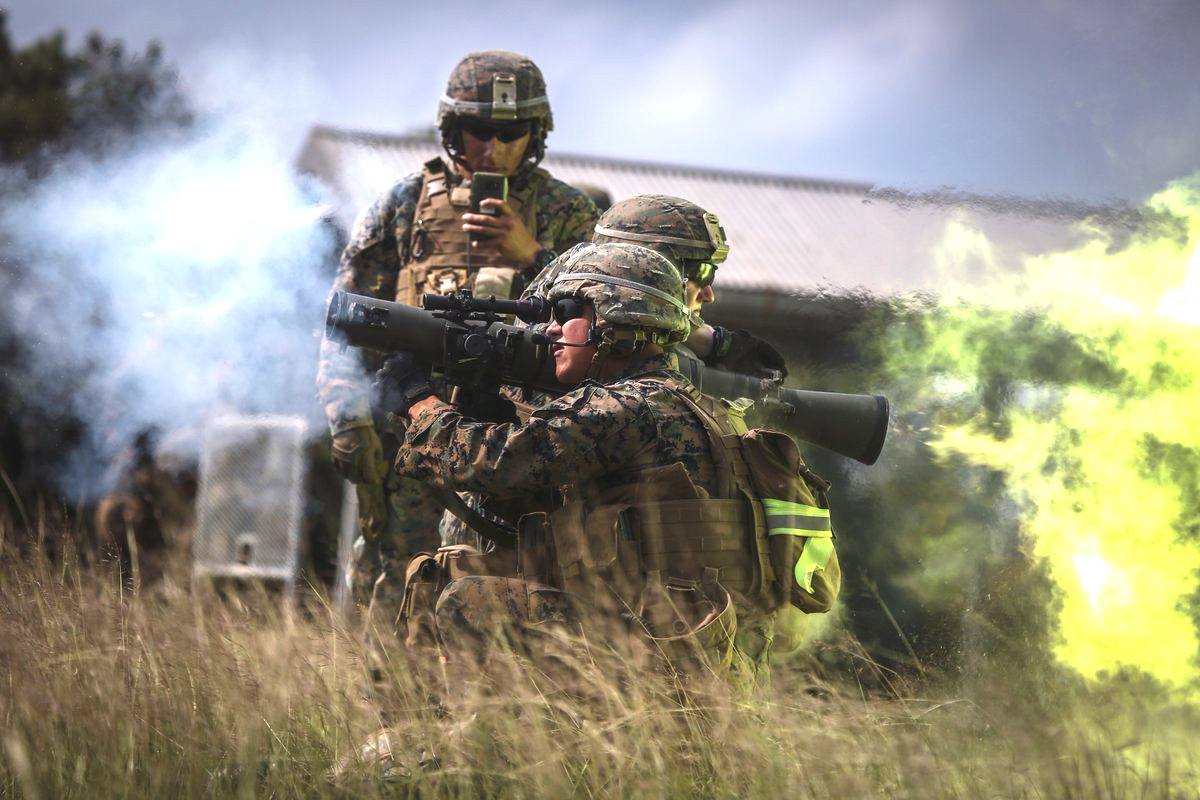
The Swedish-designed weapon is similar in many respects to the SMAW, but has a wider array of ammunition. The Corps is now considering replacing some or all of the older rocket launchers with these weapons. The Carl Gustaf is two pounds heavier than the Mod 2 version, though, which could be a factor in the service’s final decisions about what weapons ultimately remain in what units.
The U.S. Army has recently adopted the weapon for broad use among its own infantry units. Special operations forces across the U.S. military have already been using the weapon since the 1990s.
Related Video:
On top of that, earlier in January 2018, Marine Corps Commandant General Robert Neller announced that the service would do away the assault section in weapons platoons of each of its infantry companies and eliminate the Infantry Assaultman Military Occupation Specialty, also known as MOS 0351, entirely. At present, these elements are the main Marine units armed with SMAWs.
The plan, which Neller told Military.com would occur within three to five years, is to free up those Marines for other jobs, including expanding intelligence and cyber warfare capabilities. In place of the assault section, Marine combat engineers attached to infantry units would provide the same ability to destroy hardened enemy fortifications and similar dug-in positions, as well as removing other obstacles and hazards.
This transformation could give the Marines an added opportunity to retire the SMAW for good. The plans to purchase significant numbers of Carl Gustafs to replace at least some of the rocket launchers across the service will only reduce the need for the improved Mod 2 version. If nothing else, it would be reasonable to ask why the Corps would need two distinct, but roughly analogous systems and whether that money might be best spent elsewhere.
That being said, the Marine Corps’ top officer did seem to suggest that the SMAW would serve on with other infantry elements, as well as combat engineering units, in the near future. In an exchange with a Marine assigned to the service’s crisis response task force in Spain, Neller said he insisted that anyone could handle the launcher.
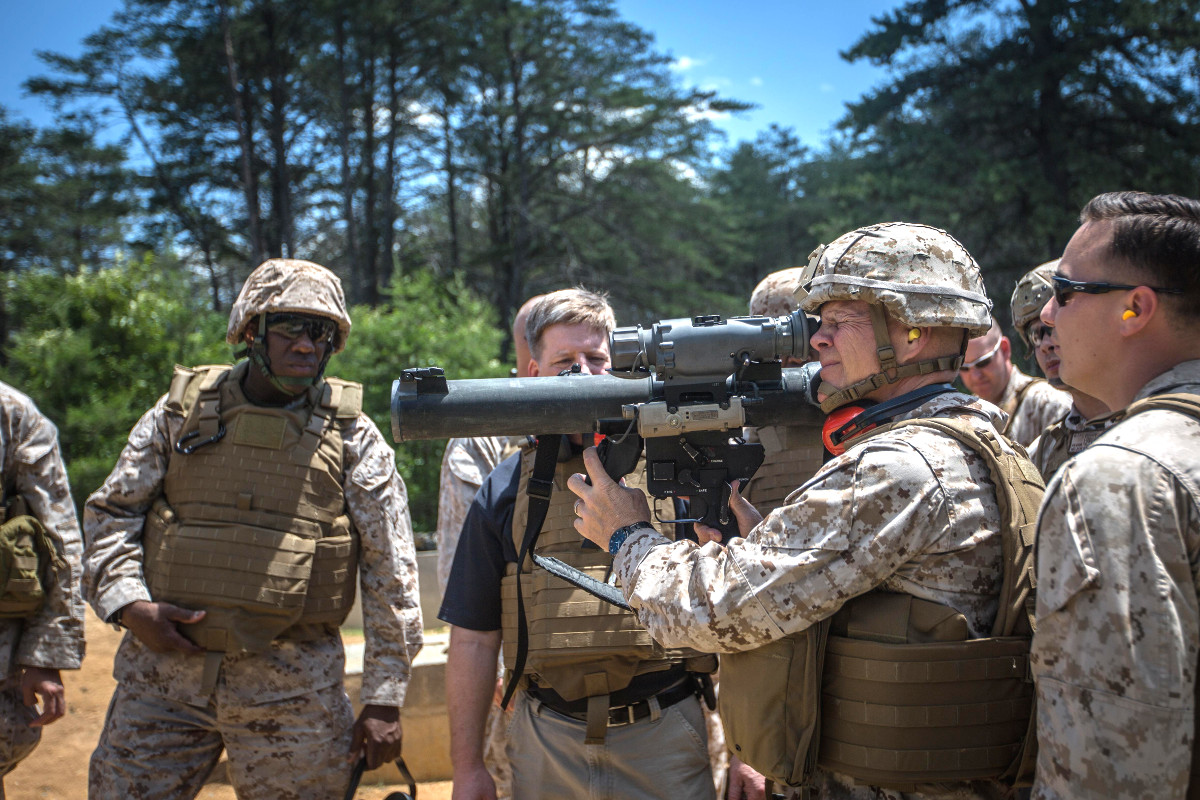
“Yes, you can [shoot a SMAW],” Neller reportedly told the individual after they said they didn’t have the necessary training. “I could teach you in five seconds.”
Depending on how the Marine Corps’ structure and needs continue to evolve, though, that supposed ease of training might become a moot point and the service might just as easily decide the SMAW has reached the end of its useful service life.
Contact the author: joe@thedrive.com
